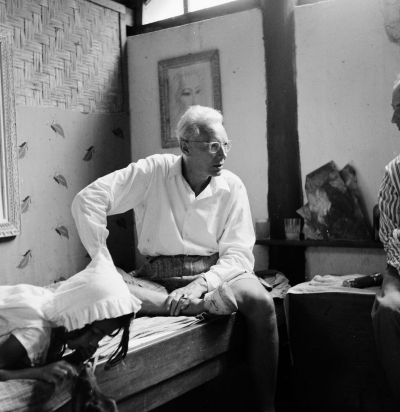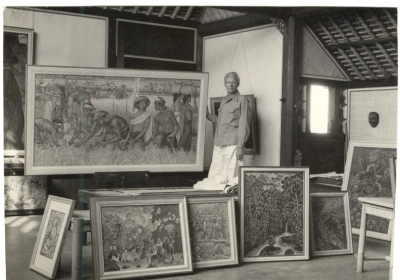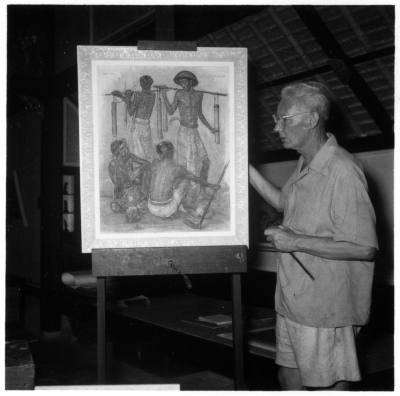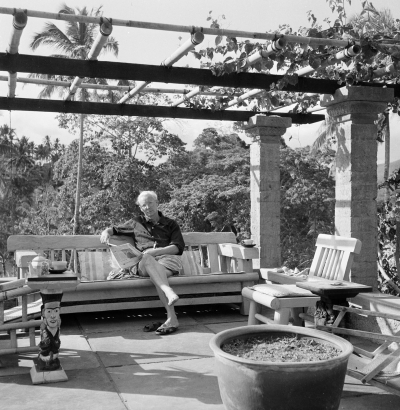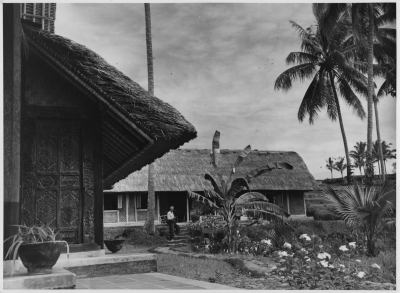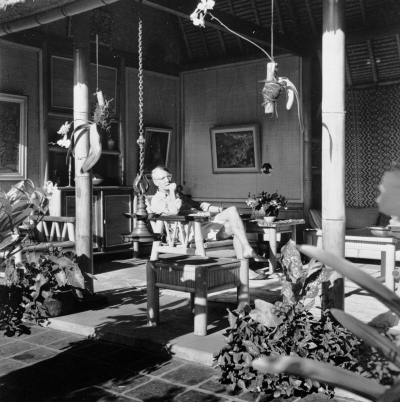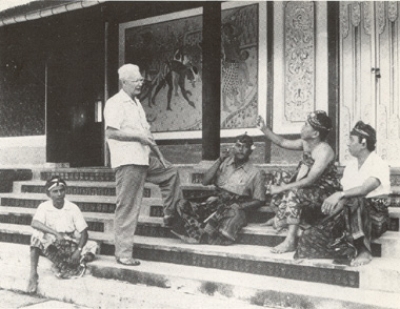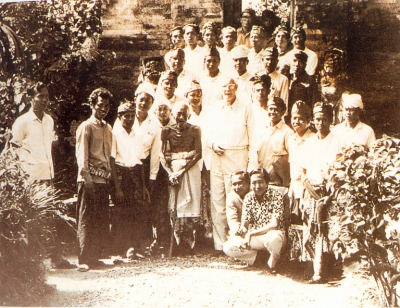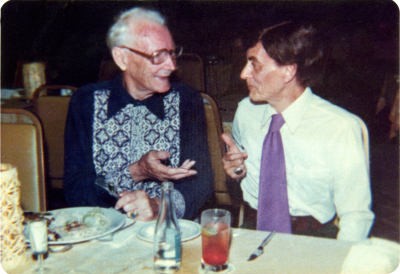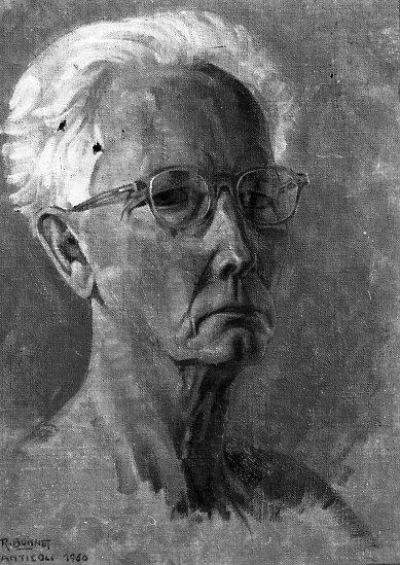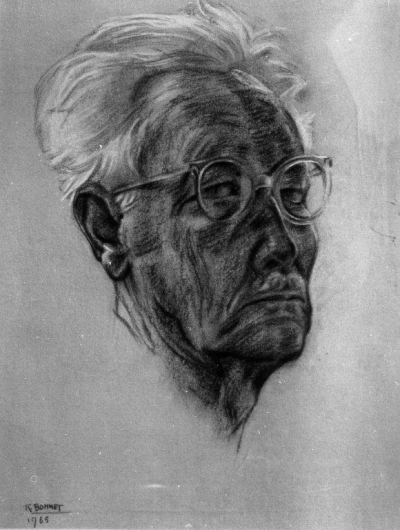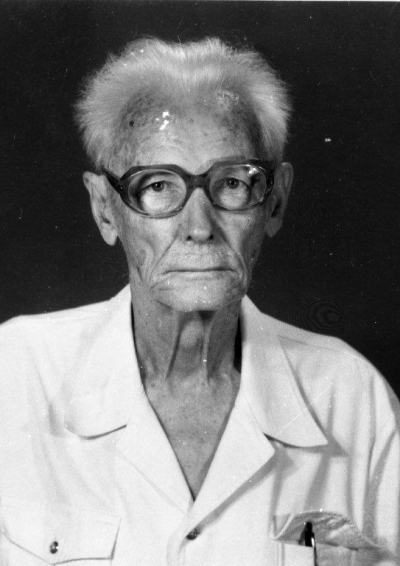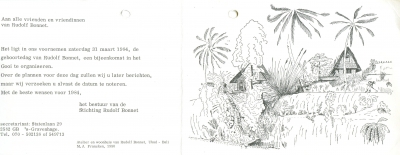Biography
Rudolf Bonnet was born in Amsterdam, in 1895. After highschool he attended the Rijksacademie voor Beeldende Kunst in Amsterdam. Soon after finishing the art academy he left the Netherlands to go to Italy, where he stayed several years in Anticoli Corrado, south of Rome. In Rome he met the Dutch artist W.O.J.Nieuwenkamp, drawer of pendrawings of Balinese village life and culture. Bonnet was excited and boarded in 1928 the steamer Jan Pieterszoon Coen, bound for the Dutch East Indies (Indonesia). After several stopovers, including in Nias, he arrived in Bali in 1929. Bonnet fell in love with the island, the local population and Balinese art, and would remain here for most of his life. The first Balinese art Bonnet encountered was what is now called ‘traditional Balinese art’, the production of which was centred in Kamasan, close to Klungkung. Signs of change were already evident. Local artists came in contact with new concepts and styles through the increasing number of tourists visiting the island and the growing number of musicians and anthropologists keen to do research in Bali. In the 1930s, the changes to Balinese visual arts rapidly accelerated.
read more ›
Rudolf Bonnet was born in Amsterdam, in 1895. After highschool he attended the Rijksacademie voor Beeldende Kunst in Amsterdam. Soon after finishing the art academy he left the Netherlands to go to Italy, where he stayed several years in Anticoli Corrado, south of Rome. In Rome he met the Dutch artist W.O.J.Nieuwenkamp, drawer of pendrawings of Balinese village life and culture. Bonnet was excited and boarded in 1928 the steamer Jan Pieterszoon Coen, bound for the Dutch East Indies (Indonesia). After several stopovers, including in Nias, he arrived in Bali in 1929. Bonnet fell in love with the island, the local population and Balinese art, and would remain here for most of his life. The first Balinese art Bonnet encountered was what is now called ‘traditional Balinese art’, the production of which was centred in Kamasan, close to Klungkung. Signs of change were already evident. Local artists came in contact with new concepts and styles through the increasing number of tourists visiting the island and the growing number of musicians and anthropologists keen to do research in Bali. In the 1930s, the changes to Balinese visual arts rapidly accelerated.
Bonnet lived in Ubud and observed how traditional painting, which depicted religious episodes in a two-dimensional wayang (puppet) style, was gradually falling into disuse. Artists started seeking subjects in their surroundings and in local folklore and legends. A new, ‘modern’ style of painting was born, executed with new techniques and materials. ‘A new branch from an old trunk’. (Stutterheim). In Ubud Bonnet became a close friend of the Prince of Ubud, Tjokorda Gde Agung Sukawati (1910-1979), a strong supporter of all Balinese traditional art forms. Together with the brother of Tjokorda Gde Agung Sukawati en and the well-known artist I Gusti Nyoman Lempad they started in 1936 Pita Maha, a foundation to represent and support Balinese artists. Activities were the organisation of exhibitions in Java and beyond, and in Bali regular meetings of painters and woodcarvers to discuss new developments in their work. Objective was to maintain a high standard in their work.
During the second world war, Bonnet was interred by the Japanese in Macassar, South Sulawesi. After the war Bonnet returned to Bali. Pita Maha didn’t function anymore, but Bonnet started a new association, together with his friend Tjokorda Gde Agung Sukawati, I Gusti Nyoman Lempad and Anak Agung Gede Sobrat. (1951). This association was not a success.
But the prince of Ubud and Rudolf Bonnet developed new plans: the building of a museum for traditional Balinese art, in the centre of Ubud, based on the legacy of Pita Maha. Bonnet designed the first building, planned the construction, collected art works to be shown in the museum, did research for a catalogue. The museum was opened on the 31st of January, 1956. Tjokorda Gde Agung Sukawati became its first director. The Museum Puri Lukisan was the culmination of Rudolf Bonnet’s life work: ‘My design of the Puri Lukisan Museum is one thing I am truly proud of.’ In 1958 Bonnet had to leave Bali and Indonesia. He returned three times, for short periods. The last time in 1972 on behalf of the then Minister of Culture, Recreation and Welfare (CRM) in the framework of the Cultural Agreement between the Netherlands and Indonesia. Another exhibition gallery of Museum Puri Lukisan had been completed during his absence and construction had started on the third. The entire complex was opened to the public on 6 July 1972. In 1978 Rudolf Bonnet passed away in Laren, the Netherlands, and was cremated. His friend Tjokorda Gde Agung Sukawati, the prince of Ubud, passed away in 1979. Bonnet’s ashes were taken to Bali by his niece Hilly de Roever-Bonnet, where they were re-cremated in the same cremation ceremony as his old friend.
‹ close
